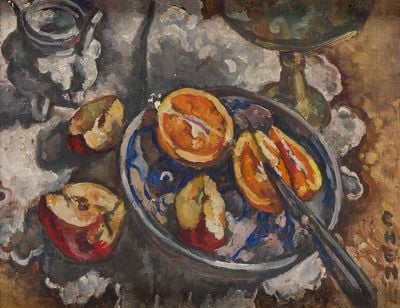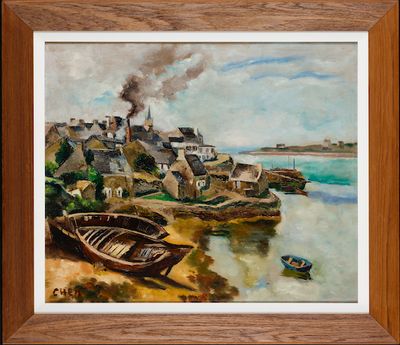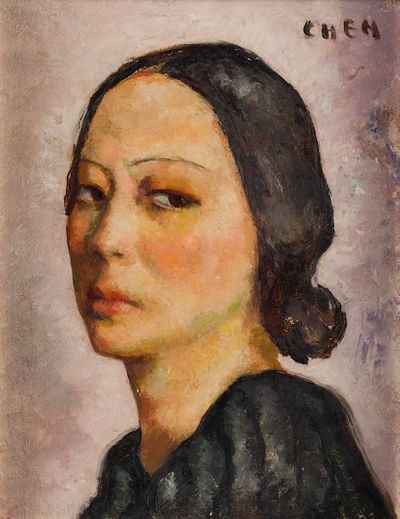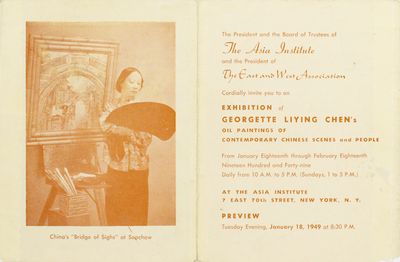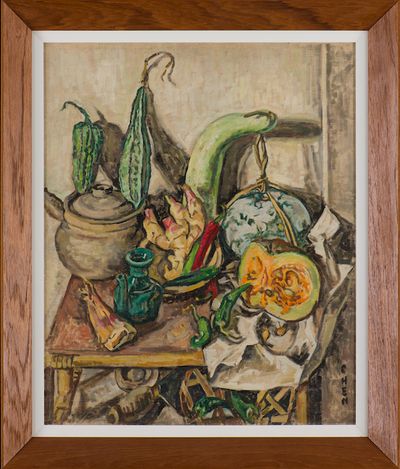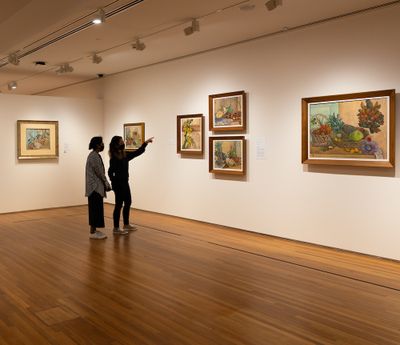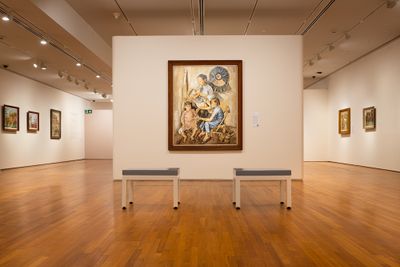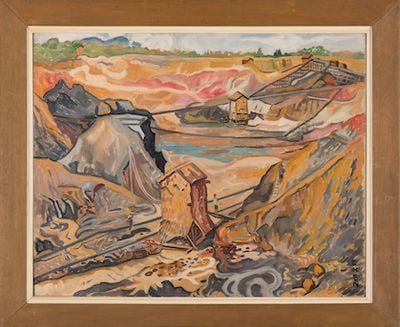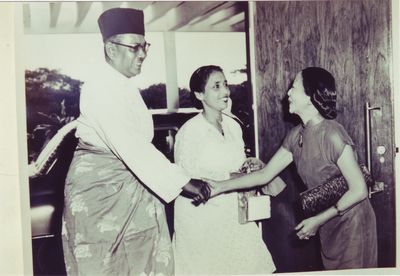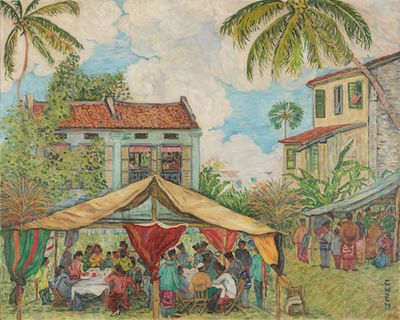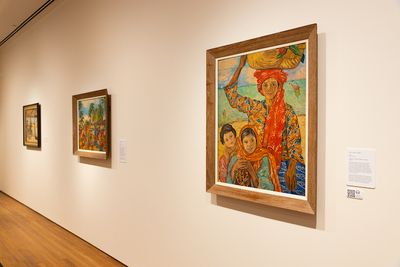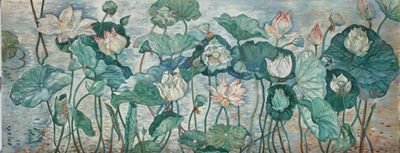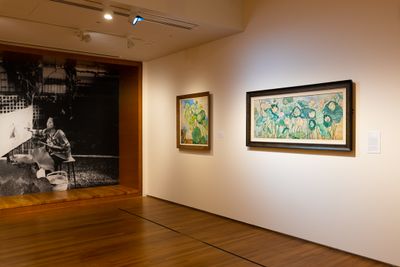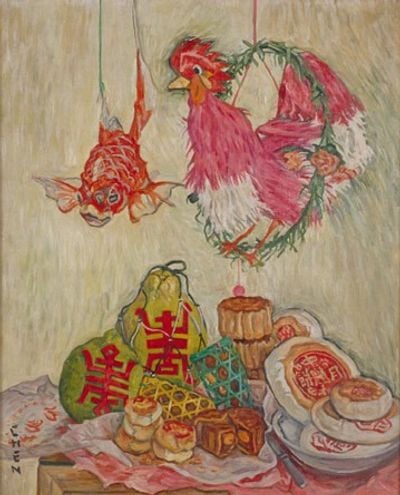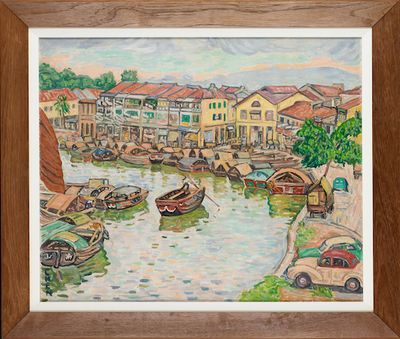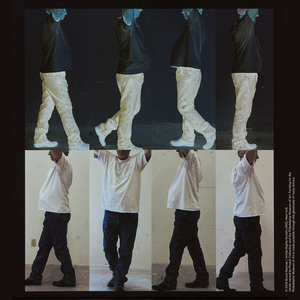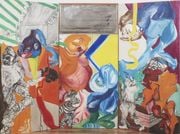Georgette Chen: An Inimitable Pioneer of the Nanyang Style
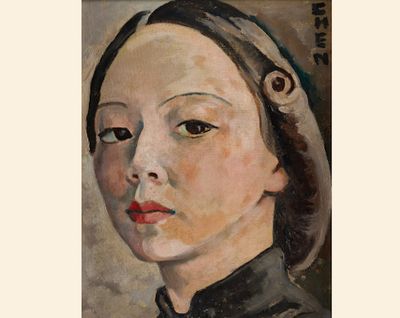
Georgette Chen, Self Portrait (c. 1946). Oil on canvas. 22.5 x 17.5 cm. Gift of Lee Foundation. Collection of National Gallery Singapore.
Georgette Chen called herself a product of two Chinese revolutions and two world wars—a legacy that frames the late artist's life and work, as presented in her first major survey in over 20 years at the National Gallery Singapore, Georgette Chen: At Home in the World (27 November 2020–26 September 2021).
'We felt it was most important to portray Chen as a prolific artist who was dedicated to her practice in spite of major global upheavals, while also highlighting her lasting contributions to Singapore's artistic community as an educator, mentor, administrator, and patron', explained exhibition curators Lim Shujuan, Sam I-shan, and Teo Hui Min by email.
Born in China in 1906, Chen led a truly cosmopolitan life. She grew up between her hometown of Nanxun in Zhejiang province, Shanghai, Paris, and New York thanks to her father Zhang Jingjiang, an international antiques dealer and important financial backer of Sun Yat-sen's republican revolution.
It was after returning to Paris in 1927 from New York, where she attended the Arts Students League, that Chen met the Sino-Trinidadian lawyer and journalist Eugene Chen, who was among the Chinese delegation at the 1919 Paris Peace conference. She studied at the Académie Colarossi and Académie Biloul and in 1930, the year she married Eugene, presented Vue sur La Seine aux Andelys at the annual Salon d'Automne, whose location remains unknown. Still Life with Cut Apple and Orange (c. 1928–1930), an oil on wood study with textured strokes bearing the hallmarks of Post-Impressionism, was painted around this period.
By the time Chen's work was shown at the Paris World Fair and the Women Painters Exhibition at Musée du Jeu de Paume in 1937, the year the second Sino-Japanese war broke out, Chen had followed her husband to Shanghai and Hong Kong. One year earlier, she staged a solo exhibition at Galerie Barreiro in Paris, which dealt the artist's monumental 1932 homage to the French salon style, Femme Nue: a striking study of a woman's body that lavishes in voluminous strokes of flesh and forest green.
Eugene was expelled from the Kuomintang for his role in the 1934 Fujian rebellion. ('Eugene paid dearly for his outspoken condemnation of the Chiang Soong Kung regime,' Chen wrote in a 1959 letter to Eugene's cousin, 'but I loved him more for it.'1)
That year, Chen produced an early self-portrait with soft brushstrokes and rich gradation—a style exemplary of her early work as seen in Landscape (c. 1930–1933), held in the collection of the Centre Pompidou and believed to have been acquired from the 1937 Exhibition of Women Artists from Europe at the Musée du Jeu de Paume in 1937. In close frame, Chen appears watchful, dressed in black; as if steeling herself for what is to come.
Chen painted Eugene often. The last canvas is dated to 1944, the year he died while under house arrest in Shanghai, where the Chens were kept under surveillance by the Japanese due to Eugene's refusal to work with the occupying force. (She even managed to stage a show at Shanghai's Metropole Hotel during this time.) He is sitting down looking directly at Georgette, one hand holding an open manuscript and the other holding up his head as a finger conceals a furrowed brow.
Two years after Eugene's death, Chen painted a striking self-portrait—at once defiant, weary, vulnerable. By now, the artist's lines had sharpened, and she turned to painting the landscapes of China that she visited after the war, from Beijing to Ningbo, including Soochow's Arched Bridge of Sighs (c. 1946)—a painting that appears on the invitation to Chen's 1949 exhibition at the Asia Institute in New York, and the same year she participated in the Salon d'Automne in Paris for the fifth and final time.
Through the 1940s, Chen's still-life compositions became more complex, with erudite lines and rippling textures. In Vegetables and Claypot (c. 1940–1945), green gourds and a sliced-open honeydew melon share a table with a clay pot and a jade-green pouring vessel; while Phoenix Eyes (c. 1940–1947) showcases an overflow of red-skinned Chinese chestnuts that revolves around a globe-shaped woven basket.
The basket would become an anchor in Chen's studies, particularly following her move to Southeast Asia, a decisive moment if not entirely expected. ('In this part of the world, I am afraid, war and revolution have blown us about like insects during a typhoon', she wrote to a friend in 1960; 'I never dreamed that I would be blown to Malaya.'2)
In works like Tropical Fruits (c. 1969), Durian and Rambutans (c. 1963), and Still Life with Rambutans, Mangosteens and Pineapple (c. 1960–1969), fruit and vegetables native to the region, from pomelos to red bananas, are cradled by the geometric lattices of woven straw vessels. In other compositions, more symbolic items take centre stage, as in Mooncakes with Green Pomelo (1965–1968), in which a large green fruit hangs in a net over a platter of traditional cakes.
Chen lived in Penang from 1951 to 1953, where she taught art at Han Chiang High School, and formed a lifelong friendship with the Chen family, whom she immortalised in Family Portrait (c. 1954–1955), one of the largest works of her career alongside Hakka Family from 1939, showing a mother breastfeeding her baby flanked by her two young children, and a draping hat hanging on the wall.
One of the artist's first shows in the region was a presentation of 80 paintings at the Chinese Chamber of Commerce in Singapore, including landscapes painted en plein air across China, America, and Malaya, such as the rugged contours of Zion National Park (c. 1947) and Tin Mine (Ipoh) (c. 1953), both painted with fluid stokes that characterise Chen's brushwork.
Moving to Singapore in 1954 was a decisive moment for Chen. She began teaching at the Nanyang Academy of Fine Arts, established in 1938 by Lim Hak Tai, a pioneer of the Nanyang style of painting that united Western techniques with Asian subject matter. Chen established herself as one of the movement's leading figures, with former students including Ng Eng Teng, a forerunner of sculpture in Singapore.
...a luminous presence reigns in the considered yet intuitive marks of an artist devoted to catching the light in the world around her.
Exhibitions with the Singapore Art Society in 1954 and at the British Council in Kuala Lumpur in 1956 followed. The first prime minister of Malaya, Tunku Abdul Rahman, whom Chen first met in 1931 while travelling with Eugene—Rahman described Eugene as a political inspiration—opened the show. Chen would go on to paint a portrait of Rahman that he kept in his home.
As she embraced the people and places she encountered in Southeast Asia, a brighter palette emerged in Chen's paintings, from a wedding party taking place in front of NAFA, Malay Wedding (c. 1962) to The Sam Sui Worker (1961), not among the works included in At Home in the World, which portrays one of the Southern Chinese female manual labourers often credited with building much of Malaya and Singapore. 'These calm, warm, picturesque shores, where the east and west blend their cultures, provide inexhaustible motifs for my canvas', she wrote.3
Though not known as a political artist, there are moments of feminist celebration. Portrait of Dr. Nalla Tan (1966), not among the works on view in the Singapore show, honours physician, writer, and women's rights advocate Nalla Tan. Tan was an early proponent for sex and public health education in Singapore, and the first woman in Southeast Asia to be elected a fellow of the Faculty of Community Medicine of the Colleges of Physicians of the United Kingdom.
In later years, pared-down compositions created stronger contrasts between line and ground, invoking the balance of an ink scroll. While the weight of oil is palpable in Bananas in a Basket (1953–1955), showing two bunches against an earth-coloured wall, a moving lightness pervades A Pot of Orchids (Dendrobiums) (c. 1963–1965), with violet blooms descending from a hanging pot over a dynamic, greyscale background.
Blossoms became more prevalent in the 1960s. Apparently, Chen became enamoured by the lotus flowers growing in a friend's garden and spent weeks studying them. What emerged from this thrall was the epic Lotus Symphony (1962), a panoramic frieze of lotuses in various states of bloom, their stalks and leaves rising up over a rippling, watery background, whose palette invokes Monet's Water Lilies.
Luckily, Chen did not suffer the fate of many women artists who were unrecognised in their lifetime, and was awarded the Cultural Medallion of Singapore in 1982. What followed was a major survey at the National Museum Art Gallery in Singapore in 1985, and another at the National Art Gallery in Kuala Lumpur in 1986. Even still, as Jane Chia observed, 'she was at once part of the local art scene and aloof from it', with Ng Eng Teng noting a level of exclusion from her male counterparts.4
In the years before her death in 1993, Chen developed relationships with art societies and institutions such as the Angkatan Pelukis Aneka Daya (APAD) and Singapore Art Society. She also worked as a grant administrator for the Lee Foundation, whose chairman became the executor of her estate, part of which contributed to the establishment of arts scholarships and fellowships in her name—a lesser-known facet of Chen's life that the curators of At Home in the World have highlighted in archival vitrines.
Since receiving a donation of 53 works from the Lee Foundation in 1994, the National Gallery Singapore has built on Chen's legacy, even commissioning The Worlds of Georgette Chen in 2014, a three-part docudrama on Chen's life and times produced by Channel NewsAsia.
Yet it is in her paintings that Chen truly lives on; where a luminous presence reigns in the considered yet intuitive marks of an artist devoted to catching the light in the world around her.
'Representation based on imagination can never truly reflect the real thing', she wrote in a rare 1943 essay on display alongside archival documentation in At Home in the World. 'I paint what I see'.—[O]
1 Letter from Georgette Chen to Dot, Eugene's cousin, 24 February 1959: displayed in an archival vitrine as part of (Re)collect: The making of our art collection, National Gallery Singapore (11 May 2018–19 August 2018).
2 Letter from Georgette Chen to Jac, Eugene Chen's friend, 6 January 1960: displayed in an archival vitrine as part of (Re)collect: The making of our art collection, National Gallery Singapore (11 May 2018–19 August 2018).
3 Ibid.
4 Jane Chia, 'Georgette Chen (1906-1993), A Pioneer Artist', Feminist Studies, Vol. 25, (Autumn, 1999): https://www.jstor.org/stable/3178669?read-now=1&seq=8#page_scan_tab_contents

